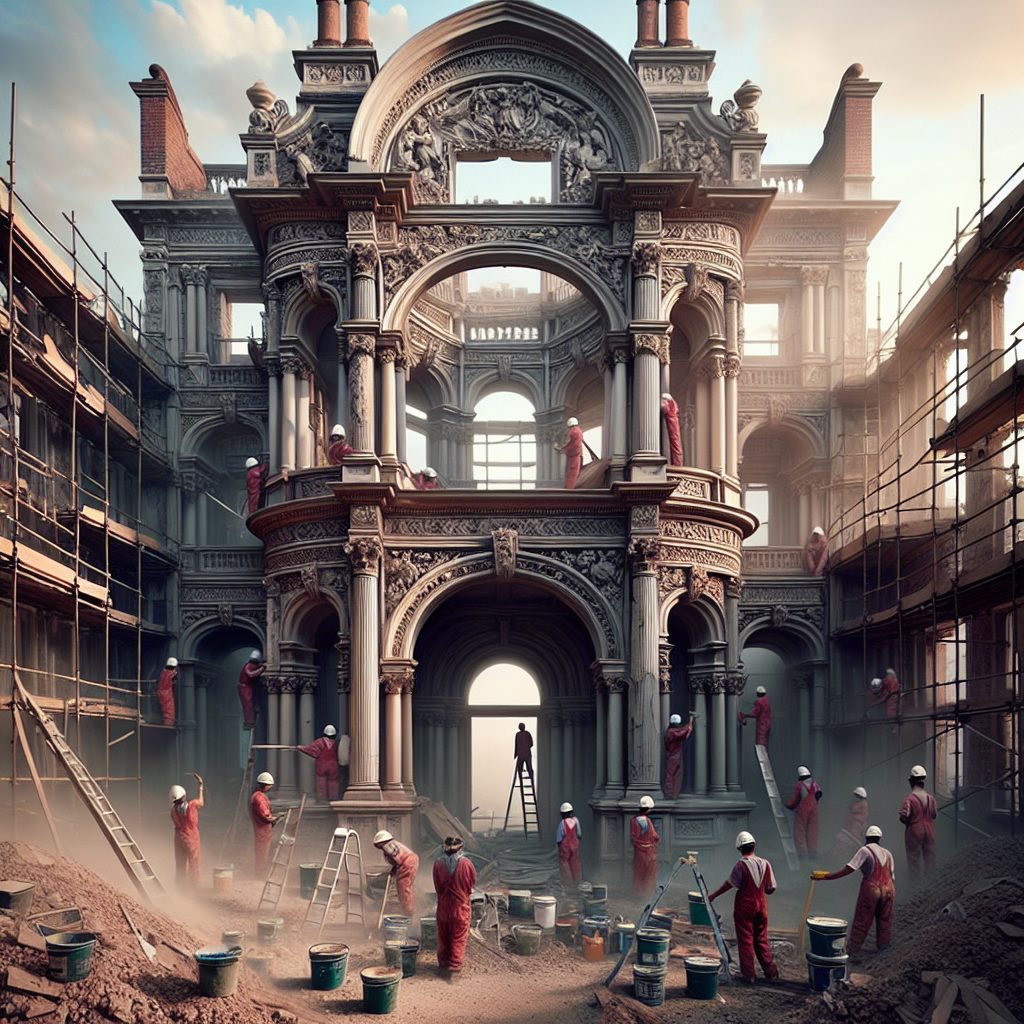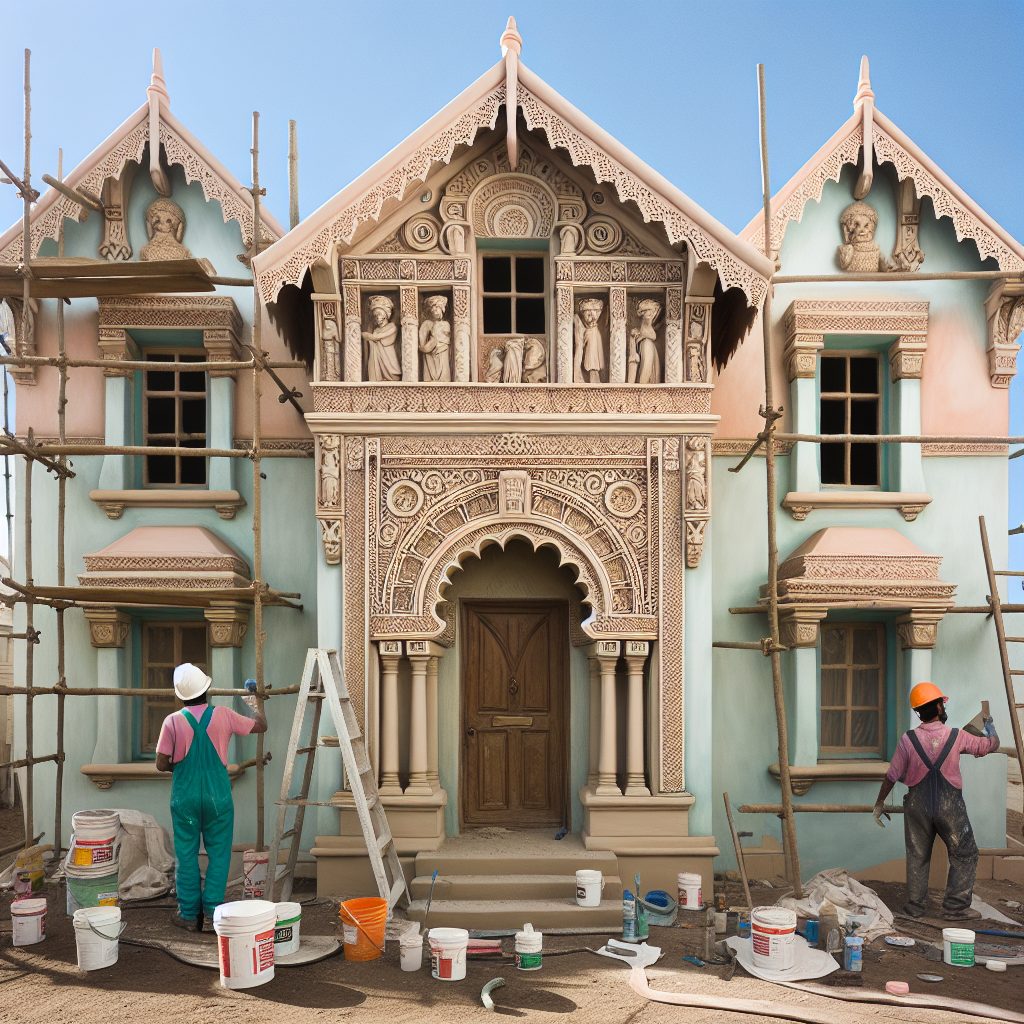Innovative Ideas for Renovating Your House Archway
House renovation is an exciting venture that allows homeowners to infuse their personal style and preferences into their living spaces. One area that often gets overlooked during this process is the house archway. This architectural feature, though seemingly insignificant, can significantly impact the overall aesthetic of your home. This article will explore innovative ideas for renovating your house archway, providing a fresh perspective on how to enhance this often-underestimated feature.
The first step in renovating your house archway is to assess its current condition and design. This involves a thorough examination of the archway’s structure, materials, and overall aesthetic. If the archway is in good condition, you may only need to update its appearance. However, if it’s structurally compromised, you may need to consider a more extensive renovation.
One innovative idea for renovating your house archway is to incorporate lighting. Strategic placement of lights can highlight the archway’s shape and create a dramatic effect. For instance, installing recessed lighting or LED strip lights along the archway’s curve can accentuate its form and add a modern touch. Alternatively, you can hang a statement chandelier or pendant light from the archway’s apex to create a focal point.
Another innovative idea is to use the archway as a canvas for artistic expression. You can paint it a bold color to contrast with the surrounding walls, or use a faux finish technique to give it a unique texture. For a more sophisticated look, consider installing decorative molding or trim. This can add depth and character to the archway, transforming it from a simple passageway into a design feature.
If your home has a traditional or historic style, you might consider restoring the archway to its original state. This could involve removing layers of paint to reveal the original material, or repairing any damage to the archway’s structure. Restoring an archway can be a complex process, but it can also be a rewarding way to preserve your home’s architectural heritage.
For homes with a more contemporary style, consider transforming the archway into a modern design element. This could involve replacing the traditional curved shape with a more angular design, or using materials like glass or metal to give the archway a sleek, minimalist look.
Incorporating storage into the archway is another innovative idea. You can install shelves or cabinets within the archway, creating a functional and stylish storage solution. This is particularly useful in small homes where space is at a premium.
Lastly, consider the impact of the archway on the flow of your home. An archway can act as a transition between different areas of your home, guiding the movement of people and energy. Therefore, it’s important to consider how the archway’s design will affect this flow. For instance, a wide, open archway can create a sense of continuity between rooms, while a narrower or more enclosed archway can create a sense of separation.
In conclusion, renovating your house archway presents an opportunity to enhance your home’s aesthetic and functionality. Whether you choose to incorporate lighting, use the archway as a canvas for artistic expression, restore it to its original state, transform it into a modern design element, incorporate storage, or consider its impact on the flow of your home, there are numerous innovative ways to approach this renovation project. By considering these ideas, you can ensure that your house archway becomes a standout feature in your home.
The Impact of House Archway Renovation on Property Value

House renovation, particularly focusing on the archway, can significantly impact the property value. This article will delve into the technical aspects of how archway renovation can enhance the aesthetic appeal and functionality of a house, thereby increasing its market value.
Archways, often overlooked, play a crucial role in defining the architectural style and character of a house. They serve as transitional elements between rooms, enhancing the flow and connectivity of the living spaces. A well-designed archway can add a touch of elegance and sophistication, transforming an ordinary house into an extraordinary one. Therefore, renovating the archway can be a strategic move to increase the property’s appeal to potential buyers.
The first aspect to consider in archway renovation is the architectural style of the house. The archway should complement the overall design of the house. For instance, a Roman arch would be suitable for a house with a classical design, while a Tudor arch would fit well in a house with a rustic or country style. The choice of the archway style can significantly influence the perceived value of the house.
The material used for the archway is another critical factor. High-quality materials such as hardwood or natural stone can enhance the durability and aesthetic appeal of the archway. These materials are also associated with luxury and high-end properties, which can increase the perceived value of the house. On the other hand, using low-quality materials can have the opposite effect, reducing the appeal and value of the property.
The size and shape of the archway can also impact the functionality and aesthetic appeal of the house. A large, wide archway can create a sense of openness and fluidity, making the house feel more spacious and inviting. On the other hand, a small, narrow archway can create a sense of intimacy and coziness, which can be appealing in certain settings. The shape of the archway, whether it’s round, pointed, or flat, can also influence the style and character of the house.
The location of the archway is another important consideration. An archway can serve as a focal point in a room, drawing attention and adding visual interest. Therefore, it should be placed in a strategic location where it can enhance the overall design of the room. For instance, an archway can be used to separate the living room from the dining room, creating a clear distinction between the two spaces while maintaining a sense of connectivity.
In conclusion, archway renovation can have a significant impact on the property value. By carefully considering the style, material, size, shape, and location of the archway, homeowners can enhance the aesthetic appeal and functionality of their house, thereby increasing its market value. However, it’s important to note that the success of an archway renovation project depends on the expertise and skills of the renovation team. Therefore, it’s crucial to hire a professional and experienced team to ensure the project is executed to the highest standards.
Step-by-Step Guide to a Successful House Archway Renovation
House renovation Archway is a process that requires careful planning, meticulous execution, and a keen eye for detail. This article provides a step-by-step guide to a successful house archway renovation, ensuring that the end result is not only aesthetically pleasing but also structurally sound.
The first step in the renovation process is to conduct a thorough assessment of the existing archway. This involves examining the structure for any signs of damage or wear and tear, such as cracks, chips, or loose bricks. It is crucial to identify these issues early on, as they could potentially compromise the integrity of the archway and pose safety risks. Additionally, this initial assessment will provide a clear understanding of the scope of the renovation project, allowing for more accurate budgeting and scheduling.
Following the assessment, the next step is to develop a detailed renovation plan. This should include a comprehensive list of the necessary repairs and improvements, as well as a timeline for completion. It is advisable to consult with a professional architect or builder during this stage, as they can provide valuable insights and recommendations based on their expertise and experience. They can also help to ensure that the renovation plan adheres to local building codes and regulations, thereby avoiding potential legal issues down the line.
Once the renovation plan has been finalized, the next step is to source the required materials. This includes not only the bricks or stones for the archway itself, but also the mortar, tools, and protective equipment. It is important to choose high-quality materials that are durable and suitable for the specific type of archway being renovated. For instance, if the archway is located outdoors, the materials should be weather-resistant to withstand the elements.
The fourth step in the house renovation Archway process is the actual renovation work. This involves removing any damaged parts of the archway, preparing the surface for the new materials, and then carefully constructing the new archway according to the renovation plan. This is a highly technical task that requires precision and skill, so it is often best left to professionals. However, if you choose to undertake this task yourself, it is essential to follow the renovation plan closely and to take your time to ensure that the archway is built correctly.
The final step in the renovation process is the finishing touches. This includes cleaning up any debris, applying a protective sealant to the archway, and adding any desired decorative elements. These finishing touches can greatly enhance the appearance of the archway and contribute to the overall aesthetic of the house.
In conclusion, a successful house renovation Archway is a complex process that requires careful planning, meticulous execution, and a keen eye for detail. By following these steps, you can ensure that your renovated archway is not only beautiful but also structurally sound, adding value and character to your home.

